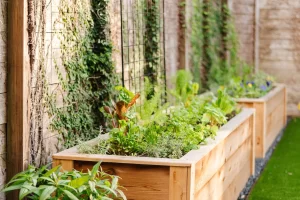Let’s be honest—most lawns are ecological deserts. Neat rows of imported grass, thirsty shrubs from who-knows-where, and flowers that might as well be plastic for all the good they do local wildlife. But what if your yard could buzz with life? That’s where native plant landscaping comes in.
Why Native Plants Matter (More Than You Think)
Picture a monarch butterfly. Gorgeous, right? Now picture it starving because your neighborhood replaced milkweed—its only food source—with yet another boxwood hedge. Native plants aren’t just pretty; they’re the foundation of local ecosystems. Here’s why:
- They feed local wildlife: Birds, bees, and butterflies evolved alongside native plants. No natives? Fewer critters.
- They save water: Adapted to local rainfall, they need far less irrigation than thirsty exotics.
- They fight pests naturally: No pesticides needed when plants have their own defenses.
- They reduce maintenance: Less mowing, less fertilizing, less… well, work.
Getting Started: The “Un-Lawn” Movement
You don’t have to rip out your entire yard overnight. Start small—maybe replace that sad patch of grass under the oak tree with a cluster of native wildflowers. Here’s how:
Step 1: Know Your Region’s Plant “Personality”
Native plants in Arizona laugh at drought. Pacific Northwest natives thrive in soggy soil. Find your plant hardiness zone and research species that actually belong there. (Pro tip: Your local university extension office likely has free guides.)
Step 2: Think Like a Pollinator
Bees need blooms from spring to fall. Birds crave berries in winter. Design for year-round habitat, not just a flashy summer show. A mix of trees, shrubs, and perennials works wonders.
Step 3: Embrace the “Messy” Look
That “unkempt” corner with fallen leaves? It’s a beetle hotel. Seed heads left standing? Bird breakfast. Wildlife gardens aren’t manicured—they’re alive.
Top Native Plants by Region (And What They Support)
| Region | Plant Example | Wildlife Supported |
| Northeast | Purple Coneflower | Bees, goldfinches (loves the seeds!) |
| Southeast | Southern Magnolia | Beetles (yep, they pollinate it) |
| Midwest | Big Bluestem Grass | Butterfly larvae, ground-nesting birds |
| Southwest | Agave | Bats (seriously—they pollinate at night) |
| Pacific Coast | California Poppy | Native bees, hoverflies |
Common Myths—Busted
“Native Gardens Look Weedy”
Sure, if you let them. But designed well? They’re lush, layered, and—dare we say—more interesting than cookie-cutter lawns. Imagine textures: feathery grasses, bold-leaved shrubs, pops of floral color.
“They’re Hard to Find”
Ten years ago, maybe. Now? Native plant nurseries are booming. Big-box stores even carry regional natives (just check labels carefully—some “nativars” are less helpful to wildlife).
“I’ll Lose Curb Appeal”
Fun fact: Many homebuyers now prefer eco-friendly yards. A sign explaining your native garden (“Certified Wildlife Habitat” plaques exist!) can spark conversations and even boost value.
The Bigger Picture: Your Yard as a Lifeline
Here’s the deal—individual yards add up. If every suburban lot replaced just 10% of lawn with natives, we’d create a patchwork of habitats across cities. That’s how you bring back fireflies. That’s how you save songbirds.
So grab a shovel. Or just a single pot of milkweed. The ecosystem will notice.




